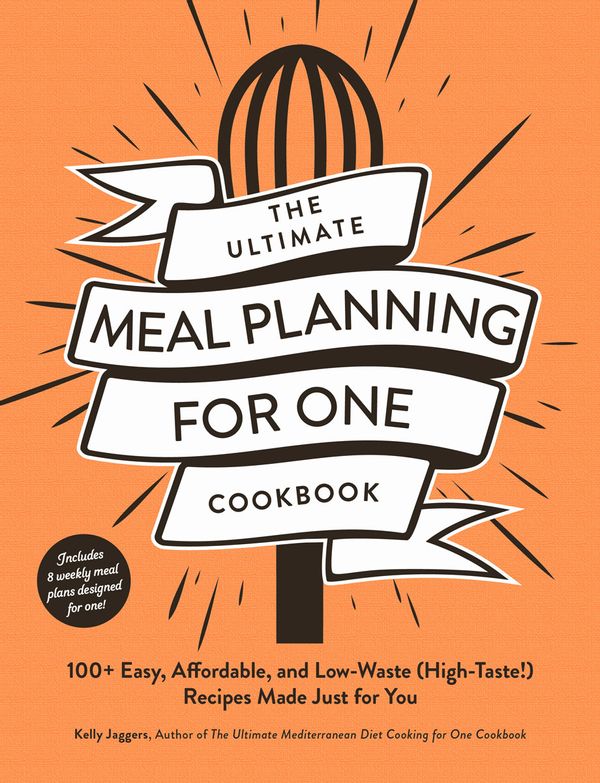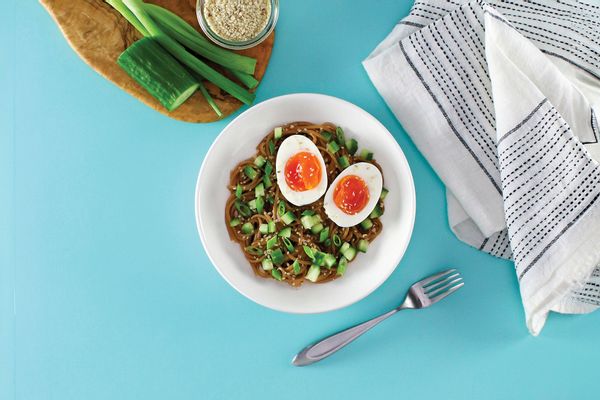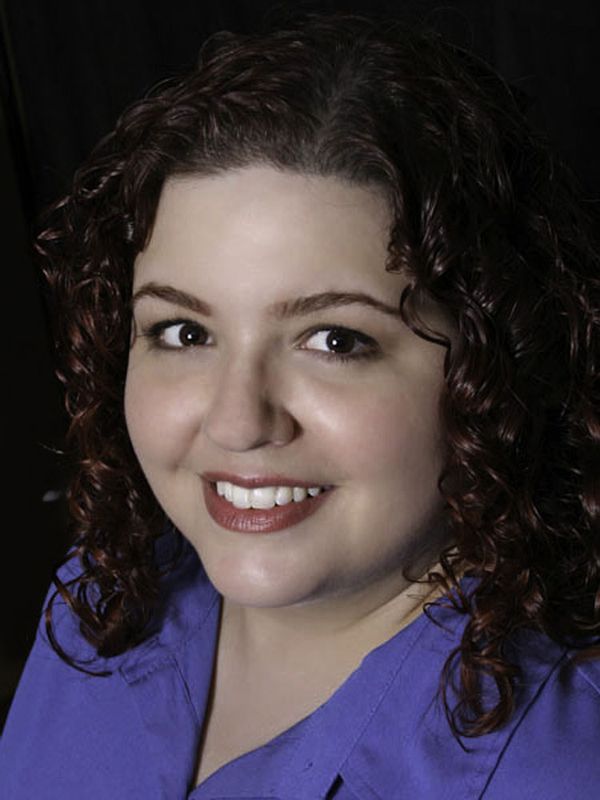
Cookbook author Kelly Jaggers knows how tricky it can be to avoid the siren song of DoorDash and whip up fresh, hot meals nightly. She also knows how annoyingly inconvenient it can be to modify recipes built to serve four when you're only looking to cook for yourself. So, she's put together "The Ultimate Meal Planning for One Cookbook," which helps to arrange and strategize your kitchen plans, ensuring that the dish you make on Monday night will supply you with leftovers to repurpose on Tuesday.
With Jaggers's help, novice cooks — and experts, too — can rely on her advice and research have a sharp, pinpointed plan for the week (or perhaps even longer, especially if utilizing the freezer to its fullest).
Salon Food spoke with Jaggers about her other tips and tricks, what inspired her to cook and her favorite, go-to ingredients, dishes and methods to ensure that you can feed your family (or just yourself) healthful, flavorful meals without a frenzied rush on a particularly frantic Wednesday night.

Thank you, first and foremost, for working on and publishing this book. I think it's such an underrepresented niche in the cookbook world, so it's refreshing to see a book like this on the market. Why did you think it was an important book to work on?
I agree! Most recipes are developed to feed a crowd and while left-overs are nice occasionally, there are only so many left-overs one can reasonably enjoy in a week!
My first goal was to make recipes portioned for one and sometimes two servings so the solo cook can still have the fun and pleasure of cooking without making too much. My second goal was to develop tasty recipes with lots of variety in cuisines and flavors – including chapters for snacks and dessert.
My hope is that people who use this book will enjoy tasty meals, have fun in the kitchen, all while meeting their personal meal planning goals.
I love the subtitle "low-waste and high-taste." How did you ensure that each recipe in the book fit that principle?
Thank you. I really wanted the recipes in the book to live up to this subtitle!
It starts with planning and shopping in the most strategic way to avoid over-buying. When you are planning your weekly meal plan, it helps to think about how to use the same ingredients over multiple meals. For example, two chicken breasts purchased in a single pack may be used to make Chicken and Green Chili Stacked Enchiladas for dinner on Monday and Chicken Noodle Soup for Thursday lunch.
Other ideas include making a batch of Freeze-and-Bake Oatmeal Cookies that are designed to be frozen before baking. You can now plan for fresh, warm cookies over two to three weeks of meal plans and not have a whole batch of cookies baked and going stale on the counter.
The second chapter includes eight weeks of example meals plans with sample shopping lists to provide inspiration and be your guide to meal; planning and shopping in a way to reduce waste.
What was the development process of the book like?
First, I sat down and considered the meals and courses I wanted to cover. I wanted this book to be comprehensive and have recipes that work all day long. Next, I wanted to organize the book so it made sense when you sit down to plan a week of meals. The chapters move from breakfast through to dessert, with main dish chapters organized by main ingredients such as Pasta, Meat Dishes and Vegetarian.
Finally, I wanted to include streamlined information on how to start meal planning, including tips for doing a kitchen inventory, what dry goods are handy to have on hand and what tools you will need for success.
What are some of the standout recipes in the book for you?
I adore the Summer Vegetable Flatbread! It is made with an easy homemade flatbread base that is first toasted in a skillet to speed up cooking and add extra flavor. It is topped with creamy ricotta cheese, zucchini, red onion, cherry tomatoes, bell peppers and mozzarella cheese and baked until hot and bubbling.
When it comes to breakfast, I am a pancake lover, so I had to include a recipe for Fluffy Buttermilk Pancakes that are topped with Bourbon Maple Syrup. I am also a fan of comfort food and I can’t recommend the combination of the Braised Beef Short Rib paired with the Baked Macaroni and Cheese for One enough. It is wonderful when the weather is cooler and you want to warm up!
Are all of the recipes single-serving, or are some of them enough to also allow for leftovers and/or a second, repurposed meal?
That is a great question. There are a variety of recipes in the book that are designed to make two servings and in the example meal plans included in the book, the extra portions are utilized for lunches or enjoyed on evenings when you want a home-cooked meal but do not feel like cooking.
I love to cook – it is my hobby and career — and even I do not want to cook every meal, so the meal plans I developed had to offer some flexibility for cook once, eat twice recipes and optional nights out with friends or family.

What are some of the top ways for home cooks to cut down on food waste?
Start with a meal plan that features foods you really love!
Sit down each week and come up with a plan and then shop your kitchen before heading to the store to avoid buying ingredients you already have. Remember, it needs to be sustainable for you. Plan for flexibility by being open to swapping meals from day to day and planning for meals out. It is about you and your lifestyle, not a plan that demands perfection.
A good tip for new meal planners is to start with just a few day a week. Maybe you only want to meal plan weeknight dinners. That is a great place to start, then you can add more meals – like lunches then breakfasts — as you get more comfortable.
For shopping, use the butcher counter to buy single portions of meat, seafood and fish for your meals when practical. You can also use the bulk section of your store to buy smaller amounts of things like dry fruit, nuts, specialty spices and grains. Be sure to use your freezer to preserve extra fresh items and keep a list of what you have so you can include them in future meal plans.
Also, the freezer is not just for meat and seafood! Use it to extend the freshness of dry goods flour, oats, chocolate and spices.
Are there any particular ingredients or types of dishes that you think lend themselves especially well to single-serve cooking?
I would hate to narrow it down too much because I firmly believe anything can be adapted for the solo home cook! However, if I had to say, my favorite ingredient from the pantry is dry pasta because it makes a great base for a quick meal. I also love having frozen shrimp on hand. They are a staple in my kitchen because they keep well frozen, can be thawed quickly for meals in a hurry and can be prepared in a variety of interesting ways.
I can’t live without tomato paste in a tube. It keeps well refrigerated and because it comes in a tube, you can easily squeeze out just what you need. It adds so much flavor to meat dishes, but can also be used for livening up pasta dishes, soups and stews. I would also be remiss if I did not mention freeze-dried herbs. I keep freeze dried dill, chives, oregano, cilantro and basil in my pantry at all times. They have the same flavor as fresh herbs, but I never have to worry about then wilting or spoiling before I get to use them.
Would you say the recipes in the book primarily feature a particular style, (i.e. Italian-American or Asian-American), or they're sort of a general hodgepodge of cultural influences?
I definitely took inspiration from a variety of cultural influences! While there are plenty of hearty meat-and-potatoes style dishes, there are also dishes inspired by Asian cuisine, the Mediterranean and Latin flavors. I also touch on regional cuisine in the US such as Cajun, Tex-Mex and the Midwest comfort food. I also have plenty of options for people looking to eat a more plant-based diet.
What stands out for you as a formative moment that got you into cooking or food at large?
My mother was a talented cook and a great teacher. She shared her recipes and knowledge with me, starting when I needed a step stool to see the top of the counter. She let me mix batters, scoop cookies and measure dry ingredients. She got me a kitchen playset and placed it in the kitchen, so when she was making a meal I could not help with, I could ‘cook’ along with her.
I had so much fun in the kitchen with her! That love of cooking carried through to my adult years and eventually inspired me to go to culinary school to refine my knowledge and develop skills I can share with others like my mom did with me!

How do you practice sustainability in your cooking and recipes?
I buy just what I need when it is practical to do so and when I do buy in bulk, I prep and store what I will use later right away so it does not languish in my fridge. Making time to plan is also a priority. I think of it like part of my regular self-care routine. When I am planning, I focus on food I truly love, with ingredients I want to eat. That is a big key to success for me and a great way to stay on track.
I also make an effort to make some meals that include left-overs, so I have easy meals to heat-and-eat when I am tired and take-out menus are calling my name.
What would you say are your three most used ingredients?
Freeze dried herbs, pasture raised eggs and hot sauce. I also use a fair bit of chocolate and I am a sucker for good quality Irish or French butter.
What is your favorite cooking memory?
This is a bittersweet memory, but one of my favorites. My great-aunt Ruby had failing health for a number of years that left her homebound and during the last year of her life she had a stroke that left her bedridden. I went to visit her after the stroke — a four-hour road trip — and asked her if I could make her something to eat. Her appetite had always been robust, but after the stroke, she did not want more than a nibble of anything offered.
She said maybe she might eat a scratch made buttermilk biscuit, one of the things I made that she loved.
I made her a big double batch, cut them out and baked her a few to enjoy right away. I then froze the rest of the biscuits unbaked so my cousin could bake them fresh for her after I went home. My cousin told me that my Aunt did not have much of an appetite after I left, but if she baked one of my biscuits, she would perk up and clear the plate.
I can’t make biscuits now without thinking of my sweet Aunt Ruby. It makes me feel connected to her now that she is gone.







